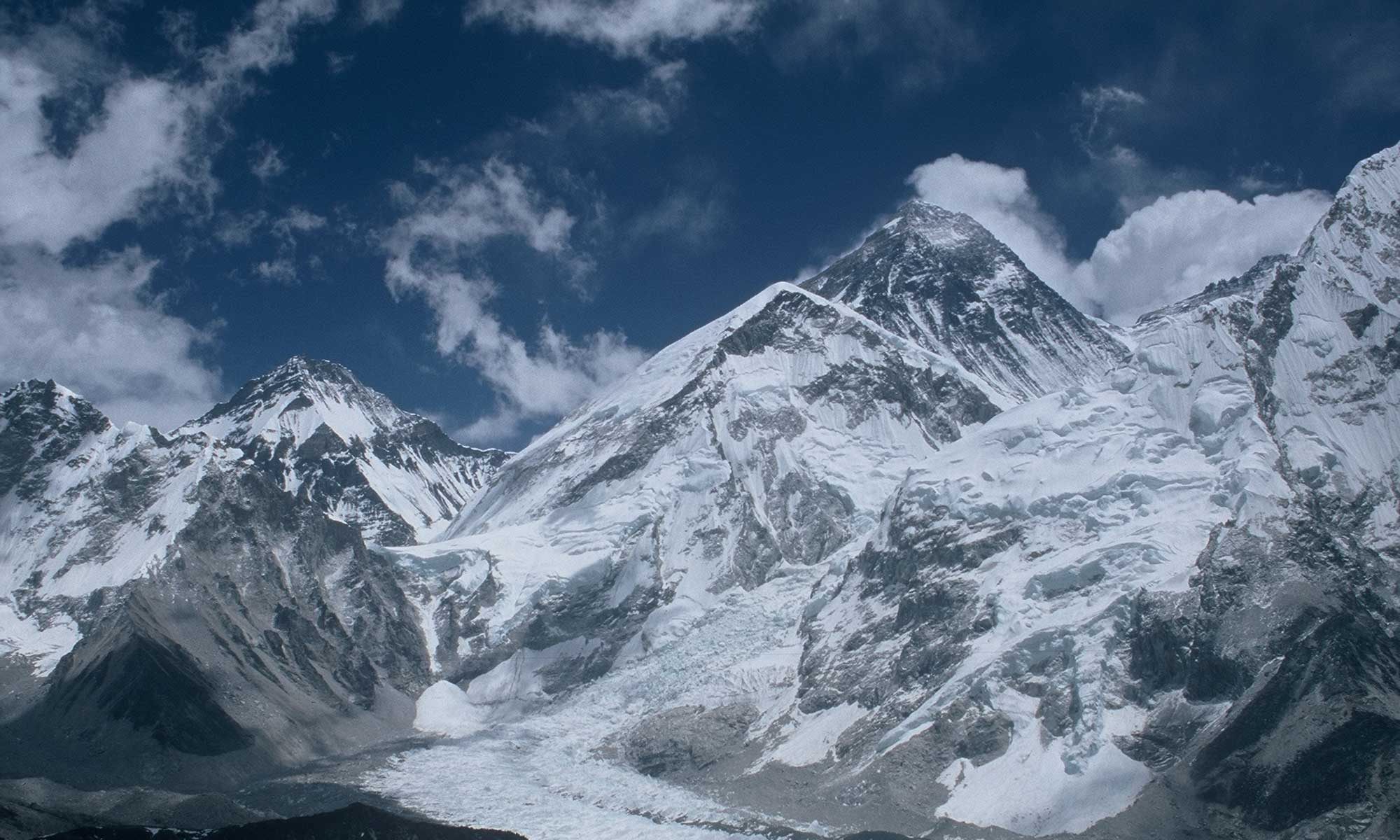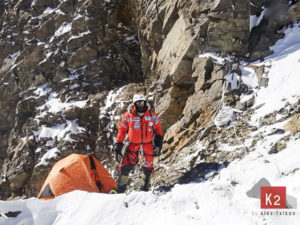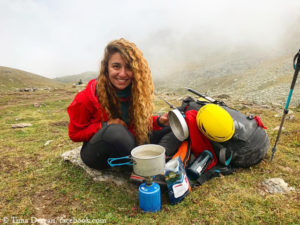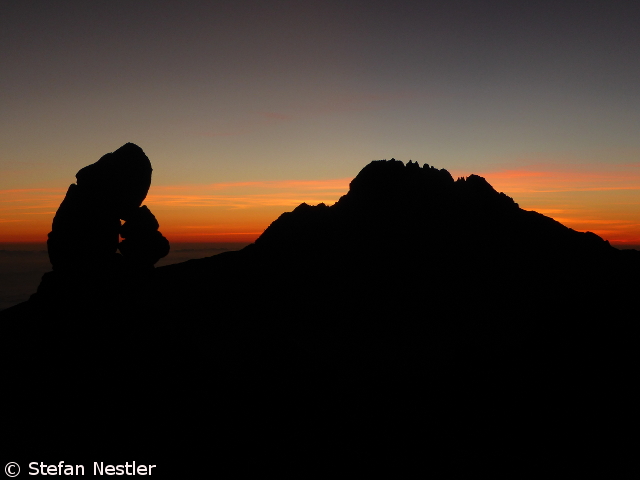What bad luck! Only with delay Waldemar Kowalewski from Poland – as reported – had joined the team of the Spaniard Alex Txikon. And now the K2 winter expedition has already ended for the 45-year-old. Kowalewski had been hit by a stone or a block of ice on his left collarbone on his descent from Camp 1 at about 6,100 meters to the Advanced Base Camp. “He had to go down at a slow pace but he feels calmer now at Base Camp,” Txikon’s team announced after the incident. Waldemar was flown out to Skardu today. Then the rescue helicopter picked up another Pole from Txikon’s team: Marek Klonowski had heart problems and could therefore no longer stay in the base camp at the foot of the second highest mountain in the world. He hopes to be able to return in about ten days.
Continue reading “Two Polish climbers flown out of K2 Base Camp”Tima Deryan: Strong Arab woman heading for Everest
She does not fit into the clichés that many people in the West have of Arab women. Fatima, called Tima, Deryan does not stand in the shadow of a man. She is cosmopolitan, self-confident and independent. She has founded a company in Dubai where she lives – and she is a mountaineer: Tima has already scaled five of the “Seven Summits”, the highest mountains of all continents. Mount Everest and Mount Vinson in the Antarctica are still missing from her collection.
On 23 March, the 26-year-old will fly to Nepal to climb the highest mountain on earth. On the trek to Everest Base Camp, Tima will certainly pay special attention to the yaks. In October 2017 on her way to Island Peak, she was attacked by a yak when she had just crossed a bridge over the Dudh Kosi between Phakding and Namche Bazaar. She was flipped over by the yak. The horns hit her at the thigh, Deryan was slightly injured.
Tima, how did you become a mountaineer?
Continue reading “Tima Deryan: Strong Arab woman heading for Everest”Winter expeditions: Waiting for end of snowfall
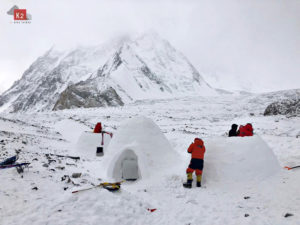
Bad weather forces the climbers of the winter expeditions on the eight-thousanders K2 and Nanga Parbat in Pakistan and on Manaslu in Nepal to inactivity. The team from Kazakhstan, Russia and Kyrgyzstan led by Vassiliy Pivtsov returned to K2 Base Camp yesterday after the seven climbers, according to their own words, had fixed ropes on the classical Abruzzi route up to an altitude of 6,300 meters. The Spaniard Alex Txikon’s team has not yet ascended, but built in the base camp three igloos, in which a total of ten to 14 people can sleep. Alex was thrilled after his first igloo night.
Continue reading “Winter expeditions: Waiting for end of snowfall”Rugby on Everest
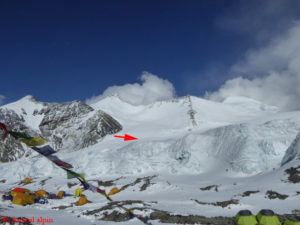
Mount Everest has long been an event venue. Thus in 2009, the Nepalese government moved a cabinet meeting to the base camp at the foot of Mount Everest to attract media attention. Also there the British DJ Paul Oakenfold gave a benefit concert in 2017. Last year a British star chef organized the “world’s highest dinner party” on the Tibetan north side of Everest: exclusive dining on the North Col at about 7,000 meters, with a white tablecloth, candlestick and champagne. And it goes on. Next spring, Everest will probably host the highest rugby match of all time.
Continue reading “Rugby on Everest”Shutdown stops Kobusch at Denali
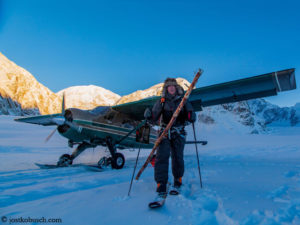
US President Donald Trump has also slowed down Jost Kobusch with his shutdown of the federal administration. The German climber was suddenly standing in front of a locked door in Talkeetna in Alaska. Jost read on a sign behind the glass pane that the rangers’ office was closed “due to the lapse in funding of the federal government budget”. The Denali National Park administration sent an email to the 26-year-old informing him that he would probably not receive any more news due to the shutdown for the time being. “Just watch the news,” he was recommended.
Continue reading “Shutdown stops Kobusch at Denali”Nanga Parbat: Nardi and Co. in Camp 3
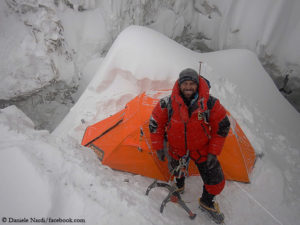
While the winter expedition teams at the eight-thousanders K2 and Manaslu have only just moved into their base camps, the Italian Daniele Nardi and his three companions on Nanga Parbat are in a more advanced phase. Today Daniele, the Brit Tom Ballard and the two Pakistani mountaineers Rahmat Ullah Baig and Karim Hayat ascended again to Camp 3 at 5,700 meters, directly below the Mummery Rib. Five days ago, the four climbers had deposited a tent there and then returned to base camp.
Continue reading “Nanga Parbat: Nardi and Co. in Camp 3”In their husbands’ Everest footsteps
Mount Everest took their husbands. And the fathers of their children. Nevertheless, Nima Doma Sherpa and Furdiki Sherpa want to climb the highest mountain on earth this spring. “We are doing our expedition for the respect of our late husbands because they were mountaineers too,” Nima Doma replies to my question about the purpose of their project. “And we want to motivate all the widows.” Everest has left a lot of single mothers behind. According to the mountaineering chronicle “Himalayan Database”, 37 Sherpas have died there in the past 20 years alone. Furdiki’s husband, Mingma Sherpa, belonged to the so-called “Icefall Doctors” who set up and secure the route through the Khumbu Icefall every year. The 44-year-old died in a fall into a crevasse on 7 April 2013. One year later, on 18 April 2014, Nima Doma Sherpa’s husband, Tshering Wangchu Sherpa, was one of the 16 Nepalese victims of the major avalanche accident in the Icefall.
Continue reading “In their husbands’ Everest footsteps”Winter expeditions are on
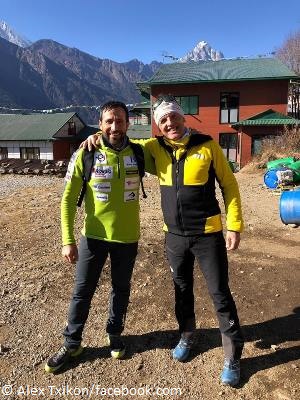
Several winter expeditions in the Himalayas and Karakoram started in the first days of the year. Two of the three climbers who had succeeded the first winter ascent of Nanga Parbat in 2016 met in Lhukla in Nepal, however now with different goals: The Spaniard Alex Txikon wants to tackle K2 in Pakistan, the last remaining eight-thousander to be climbed for the first time in the cold season, the Italian Simone Moro is drawn to Manaslu again. The 51-year-old and the South Tyrolean Tamara Lunger had failed on the 8167-meter-high mountain in western Nepal in 2015 because of the enormous snow masses of that winter. This year, according to the Kathmandu-based newspaper “The Himalayan Times”, Moro plans to climb with the Nepalese Pemba Gyalje Sherpa on the normal route without bottled oxygen. In order to acclimatize, they wanted to climb the 6,476-meter-high Mera Peak in the Khumbu region. Continue reading “Winter expeditions are on”
